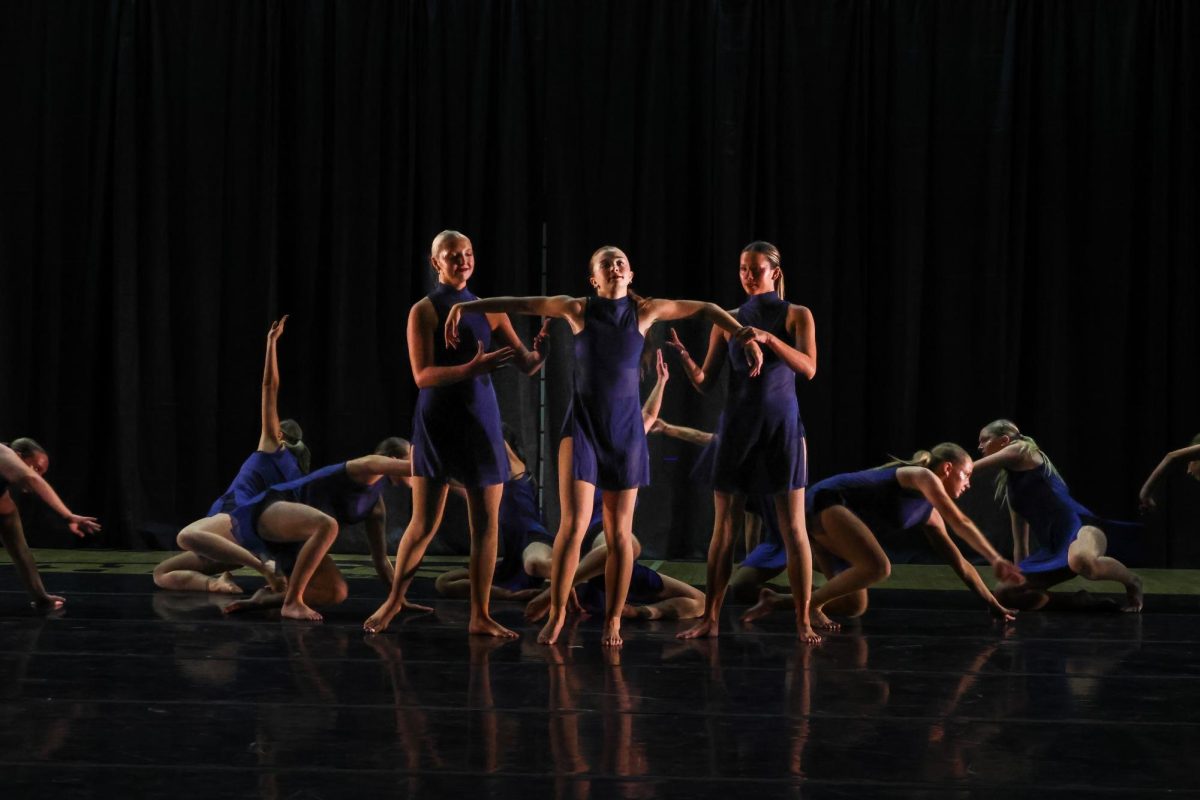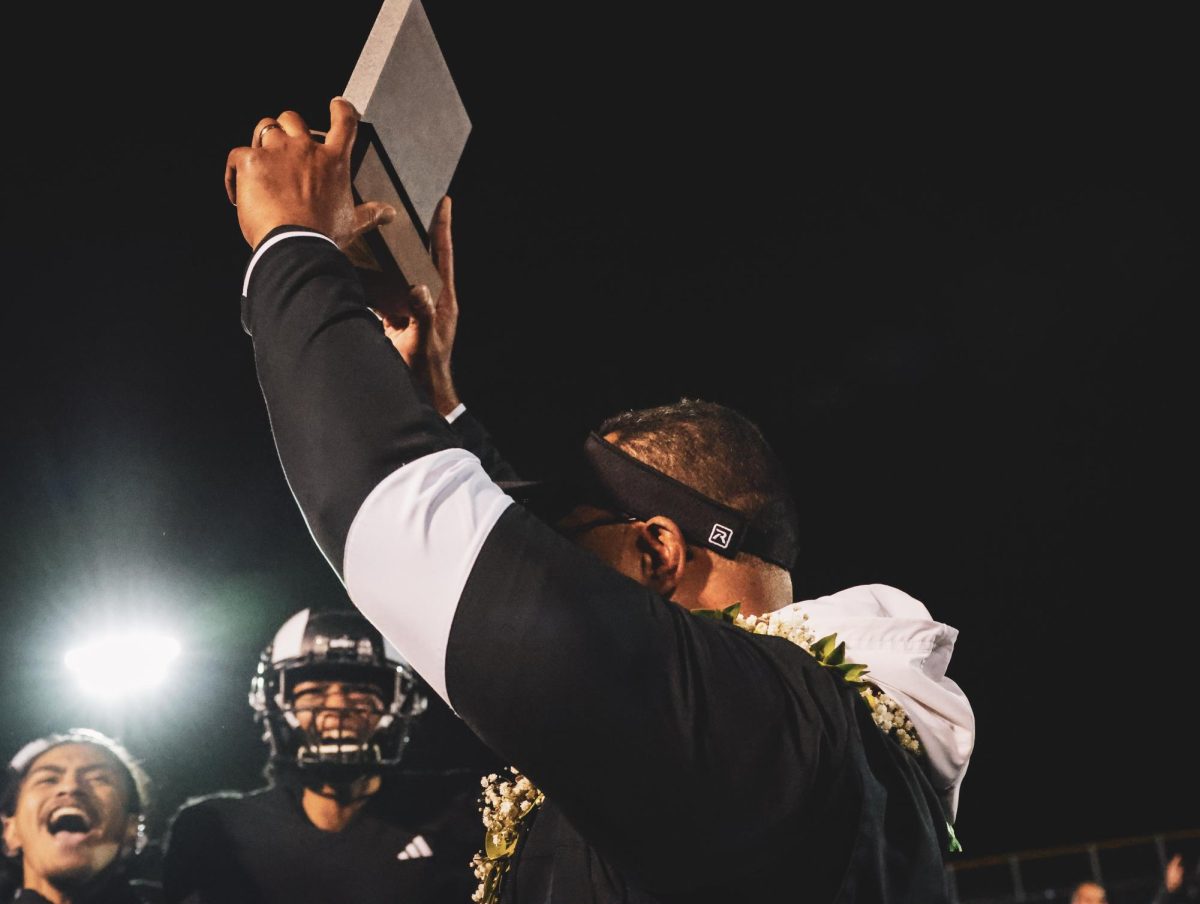So, How’s Zoom Going So Far?
December 17, 2020
A vast and empty horizon. A sea of darkness, devoid of any human life forms. This is how many teachers begin their day, teaching into the void.
Now, there is not an actual void, but for many teachers it certainly feels that way when they are teaching in a Zoom classroom filled with blacked-out screens.
“As a teacher I have found that kids hide behind that and don’t participate. They get on Zoom and then they disappear,” Carleen Burnell, English teacher, said. “When you are on a computer and you black out your screen, that is one more separation from the rest of your class. It’s hard to feel connected to my students in that way. It’s hard to feel like I know them.”
Especially for teachers who have a lot of new students this can be very challenging.
“My mom is a teacher, so I see this at home. Not being able to see students’ reactions to certain topics is hard,” Claire Sophie Malinka-Thompson, sophomore, said. “If they look confused but are afraid to speak up, the teacher can reexplain the topic and the student will benefit from that. With all the cameras being off there’s no classroom environment where they can gage those reactions. As a teacher you wouldn’t really know if what you’re teaching is working”
Building relationships with teachers can go a long way when it comes to the students’ success in a class. It is also one of the things that Carleen Burnell, Highland English teacher, enjoys best about being a teacher.
“I miss being in your presence. I miss feeling your energy and your vibes,” Burnell said. “I worry sometimes because I don’t know students who might be in trouble because I can’t connect with them. I can’t know that this isn’t the behavior of this person normally. It’s just really hard. As a teacher my deepest desire is to get to know you in this time that I have with you and to help you succeed as a student and it’s really hard to do that when I can’t get to know you or even your face.”
In almost every class it is common to see very few faces. Teachers try to encourage students to turn on their cameras, but they cannot actually require it. This means that a lot of students are in class without really being in class. They lay in bed scrolling through Instagram while class is happening. It can be a lot harder to pay attention when distractions are so much easier to access. There is also an abundance of at-home responsibilities that a lot of students have to deal with. There are definitely more challenges to encounter and more barriers to learning when everything is remote.
“Not necessarily everybody comes ready to learn. We have students who are lying in bed. We have students who are trying to listen to their classes and participate, but they have to work, or they have to help with something else,” Burnell said. “So, the situation also is hard, in that students, teachers too, but students especially are really juggling a lot and it’s hard to do it when you are in front of a computer screen all day long every day.”
Turning on the camera for class eliminates one of the barriers to receiving a remote education, but there are a lot of reasons why a student would not want their camera on that has nothing to do with avoiding participation and everything to do with insecurity. It is no secret that most teenagers battle with insecurity. The temptation to avoid those insecurities comes in the form of blanking out a screen so that no one can see their faces.
“I feel like it depends on how I’m feeling that day if I have my camera on or off,” Malinka-Thompson said. “In classes where I feel comfortable and I know the teacher a bit better I’ll turn my camera on because I’m more comfortable in that environment and I don’t worry about the stuff behind me and my face and that kind of thing.”
When students can constantly see their face on the screen and they know that their peers can also see their face on screen throughout the whole class period, it leaves a lot more room for self-criticism. However, keeping them off can also be excuses to not participate and make the classroom and the teacher feel more alienated from each other.
However, there are also a lot of perks to online learning. One example that Burnell mentioned was the ability to use online discussion boards through Canvas.
“There are students who participate in the online written discussions in a way that they would not participate in in a classroom. Because either they are too shy to express their opinions, or they don’t really know how they want to respond because they need more time to think about what their response would be, but when you’re doing a discussion online and it’s over Canvas, they have time to think about what they’re writing. They don’t have to talk in front of people which makes so many students nervous,” Burnell said. “They just enjoy it better, and they do better. So, I’ve really liked that.”
For some students, online school has increased their participation. When students have a little more time to think they can feel more confident in their answers and academic ability. The whole world has been gradually shifting towards digital mediums. The ability to do school online has increased students and teacher’s digital literacy. It is maybe not the circumstances the world would have wanted to learn technology under, but it could be helpful to students in the future as technology becomes increasingly central to work and school environments.
“I know that my students and I have made the best of this,” Burnell said. “Mindset and perspective is everything. So as soon as I shifted my mindset around and decided to make online schooling the best, I could make it as a teacher with my students, it didn’t become so horrible anymore.”






























